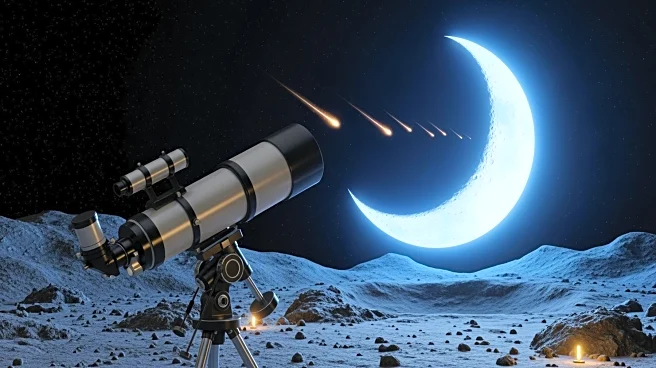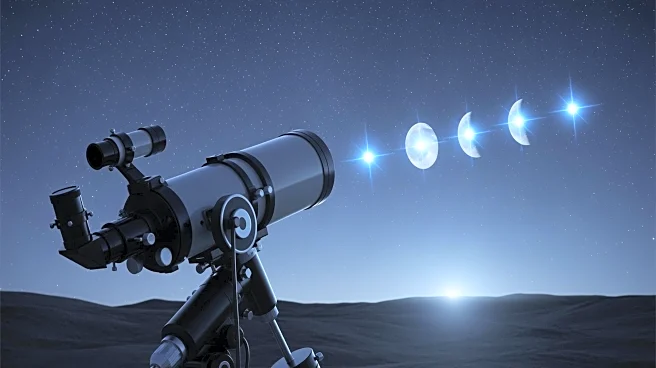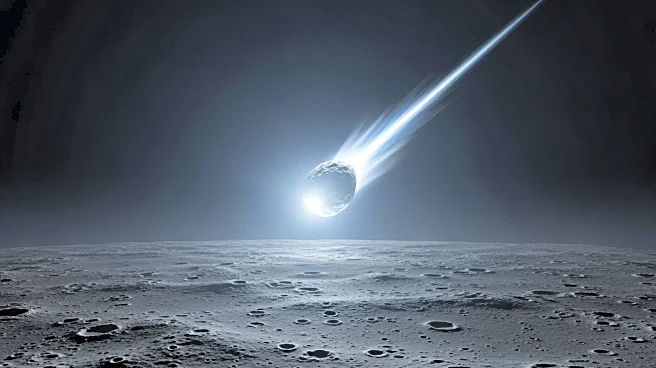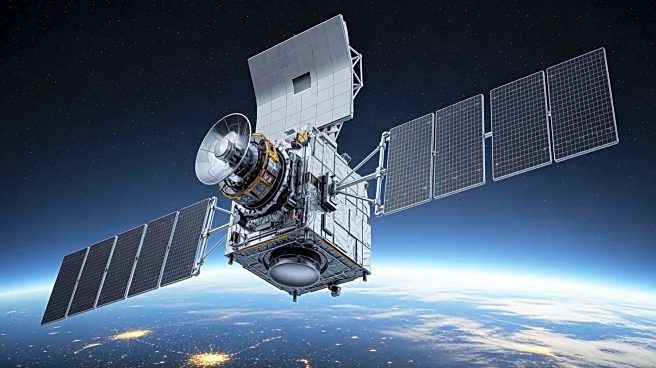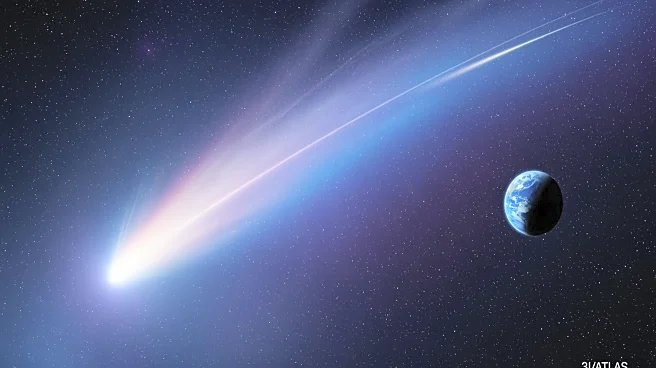What's Happening?
Daichi Fujii, a curator at the Hiratsuka City Museum in Japan, captured two recent lunar impacts using an 8-inch telescope. These impacts, recorded on October 30 and November 1, 2025, were caused by asteroids
striking the moon's surface, resulting in visible flashes of light. The first impact is believed to be associated with debris from the Taurid meteor shower. Fujii's observations contribute to understanding the frequency and energy of such impacts, which is crucial for planning future human outposts on the moon. His work, which has documented about 60 lunar impacts since 2011, aims to engage the public with science and inform the design and operation of lunar bases.
Why It's Important?
The documentation of lunar impacts is significant for future lunar exploration and habitation. Understanding the frequency and energy of these impacts can inform the design of lunar bases, ensuring they are built to withstand such events. This research is crucial as space agencies and private companies plan for human presence on the moon. The data collected by Fujii and others can help mitigate risks associated with lunar impacts, making future lunar missions safer and more sustainable.
What's Next?
As interest in lunar exploration grows, further studies and observations of lunar impacts will likely continue. These efforts will support the development of technologies and strategies to protect lunar infrastructure. Space agencies may collaborate with researchers like Fujii to enhance impact monitoring and improve safety measures for future lunar missions.
